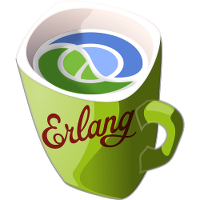
LFE-Clojure (JVM) Interop using JInterface
This project is a port of Maxim Molchanov's example Erlang + Clojure interop project (via JInterface). Only minor changes were made to the Clojure code. The Erlang code was completely replaced with LFE.
This project demonstrates how one can:
- Create a Clojure project which utilizes Erlang JInterface to communicate with LFE nodes,
- Start a supervised Clojure node in LFE,
- Send a message to Clojure nodes from LFE, and
- Receive responses from the Clojure nodes in LFE.
- Erlang
lfetool+rebar
- Java
lein
To get started, build the Clojure Uberjar for cljnode and compile the
Erlang source files:
$ make compileOnce everything has compiled successfully, you can start an Erlang shell and then bring the app up:
$ make repl(lfenode@cahwsx01)> (lfeclj-app:start)
okAlternatively, you can use the dev make target which will start the
lfecljapp for you automatically:
$ make devOnce the app has started, you will see output like the following (elided):
(lfenode@cahwsx01)>
14:03:52.849 [info] Application lager started on node lfenode@cahwsx01
14:03:52.855 [info] Starting clojure app with cmd: "java ..."
At this point, you are in the shell, and before too long you should also see a log message display showing the successful start of the Clojure node:
14:03:52.856 [info] Application lfecljapp started on node lfenode@cahwsx01
14:03:55.898 [info] Connection to java node established, pid: <11113.1.0>
Now that you've got both ends of the connection up, you can take it for a spin with a ping command:
(lfenode@cahwsx01)> (lfecljapp:ping "clj-node@cahwsx01" "clj-mbox")
#(ping <0.83.0>)The node name used in the example above was taken from the output when the
Clojure node was started up. In particular, look for the line beginning with
INFO: Starting clojure app ... and the value associated with the -Dnode
parameter. That's your destination node in this case.
To see the response from the Clojure node, you'll need to flush the shell, since the Clojure port sends its responses to the caller, and in this case the caller is the LFE REPL:
(lfenode@cahwsx01)> (c:flush)
Shell got {pong,<11113.1.0>}
okHurray! A successful response from the Clojure node!
Here are some things I'd like to play with in this project:
- Setting up some example long-running computations in Clojure.
- Spawn multiple nodes and distribute computations across an LFE cluster.
- Use
lfecljappas a proxy to a Storm cluster, and explores ways in which it might be useful to interact with Storm from LFE.